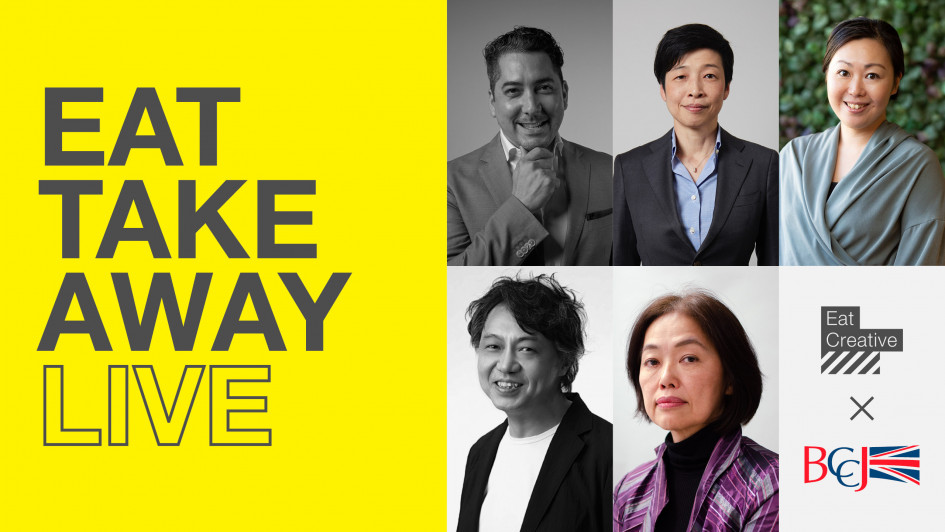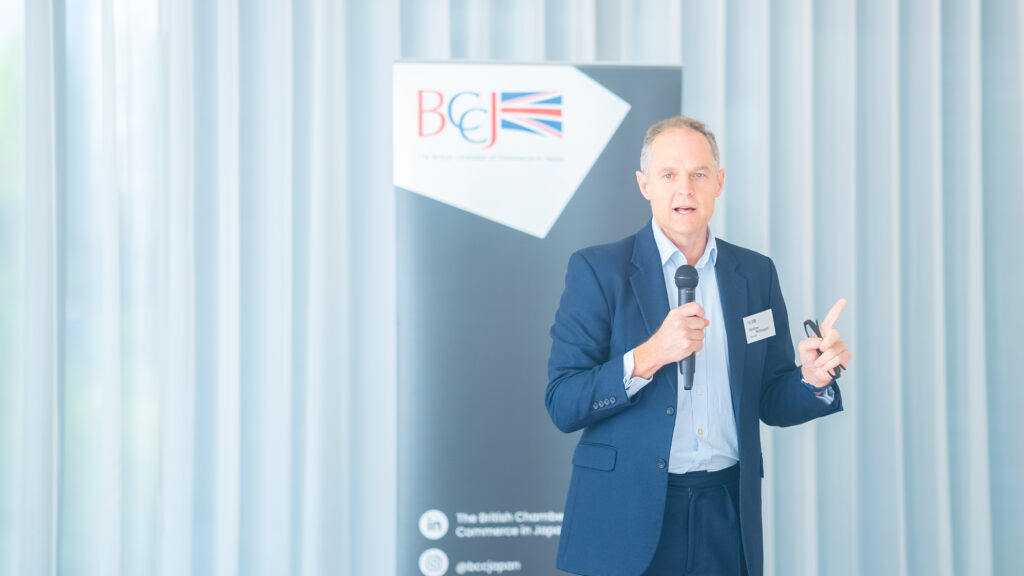Member? Please login
Green Minds, Creative Solutions to Business Challenges

Written by Sterling Content
June 14, 2024
Past Event Round Ups
Responsible business considers society, economy and environment, promoting comprehensive sustainable development for current and future generations.
With this concept front of mind, British Chamber of Commerce in Japan members and guests delved into the approaches of regenerative business and sustainability in practice at an interactive event hosted by strategic design and sustainability consultancy Fabric, in May.
Entitled “Green Minds, Creative Solutions,” the session was led by Fabric’s Dr. Stefanie Di Russo, strategic design director; Hasumi Nemani, sustainability strategist; and Tomoko Saigan, sustainability strategist.
Di Russo began by introducing attendees to Fabric, a “purpose-driven organisation with a mission that delivers human insight and practical innovation to help businesses scale and thrive.”
With an open-door policy, the company’s Nakameguro office hosts a library, a “kirei (clean) station” where the lifecycle of items such as glasses, smartphones and sneakers are extended through repair, and the occasional “free” market. It also features a recycling system that encourages employees to properly dispose of their waste and a worm farm that breaks down food waste into compost. Staff and visitors can even bring containers to top up on household cleaning products like detergent, thereby reducing their purchase of plastic items.
“We try to live and breathe as much sustainability as we can,” she said, adding that the practice is a core part of Fabric’s identity.
Regenerative business
The idea of regenerative business comes from agriculture, explained Nemani, noting that farming with crop productivity and financial value at its core results in negative effects on people, planet and profit in the long run. These include reduced soil and water quality due to mono crops and pesticide use, loss of biodiversity and health issues for the farmer.
Regenerative farming, however, “values the ecosystem as a whole” by working the land responsibly and allowing ecosystems and communities to thrive while still providing crops.
In a business context, three core principles underpin a regenerative business:
- benefiting multiple stakeholders
- valuing success using a plural capital framework
- driving a paradigm shift in societal values.
“It is paramount to design a business where the more profitable it is, the more positive impact it has on society and environment,” she said.
The road to this kind of business begins with sustainability transformation: a comprehensive change process that organisations, cities and governments undertake to integrate sustainability into their core strategies and operations. But the path is not always easy; there can be growing pains.
Nemani introduced the four phases of sustainability transformation:
- conventional (a CSR-dominant paradigm where sustainability is not the core part of the company’s agenda)
- “green” (the beginnings of a business embracing sustainability as a source of advantage)
- sustainable (sustainability is a core driver of value-creation but not integrated completely; employees are empowered with relevant understanding and the company is going beyond reducing negative impacts to creating positive impacts)
- restorative/regenerative (positive impact is woven into the core of the business model and reflected in the brand’s identity).

Sustainability in Japan
Nemani noted that “a big part of sustainability transformation is bringing the consumers or citizens to understand the concepts and their interconnectedness, and integrate them into their day-to-day decisions, resulting in a large population with a higher sustainability consciousness.”
With this in mind, Fabric has conducted an annual study to understand and monitor consumer perceptions around sustainability since 2021.
In 2023, the research explored the pathway to sustainable business with a survey of Japanese people of various demographics. It found that, overall, sustainability consciousness is “shifting up steadily year on year, but there is no tipping point effect yet.”
Looking at respondents’ age groups specifically, Baby Boomers were most active and engaged in sustainability, followed by Gen X and Gen Z, both of which showed a relatively higher sustainability consciousness than Millennials, which had the lowest level.
According to Fabric’s survey, the main barrier to sustainability consciousness was “economic constraints.” For younger generations, the second-highest barrier was “lack of time.”
Fabric hypothesised that yoyu (bandwidth) is a factor in determining the extent of people’s sustainability consciousness. For example, Baby Boomers, who are in the later end of their careers, tend to have more money and time, allowing them the bandwidth for sustainability concerns. Millennials, on the other hand, generally have less bandwidth as their time is taken up with career development and/or raising a family.
By examining the idea of bandwidth within the eight dimensions of wellbeing (emotional, physical, occupational, social, spiritual, intellectual, environmental and financial), the Fabric team were able to correlate wellness and sustainability consciousness.
“The lower a person’s wellbeing, the lower the attitude or actions related to sustainability. So, elevating wellbeing appears to be a pre-condition for sustainability consciousness to become mainstream,” said Saigan.
Wellbeing, therefore, is “an opportunity that can be drilled down on to aid sustainability in Japan,” she added.
Unfortunately, though, Japan has a poor track record of fostering wellbeing in the workplace, as demonstrated by the Fabric survey that shows work and career was ranked lowest among the eight dimensions of wellbeing. Respondents reported low satisfaction with work and career wellbeing, with levels of motivation and agency critically low across income levels.
Moreover, only 10% of those polled said they feel they are growing at work while a mere 15% said they have a sense of purpose at work.
This data presents “a big opportunity for organisations to innovate and redesign the relationship they have with their employees,” noted Saigan.
Workshop outcomes
Participants engaged in discussions on how their organisations could improve the wellbeing of their employees. Ideas included better engagement to improve workplace behaviour and culture, such as through all-hands involvement in the creation of a corporate code of values that monitors and evaluates the actions of all employees regardless of status.
Groups noted the need for greater proliferation of flexible work arrangements, use of the full allocation of annual leave and less reliance on messaging apps outside of working hours.
It was also suggested that organisations become more open and flat, so staff could more easily share ideas, talk with colleagues, learn new skills, broaden their horizons and find opportunities at work.
In conclusion, the Fabric team noted that “in order to start thinking about sustainability transformation for a regenerative future, we need to look at what kind of impact we are having through our businesses, focusing on doing more good and doing less harm.”







